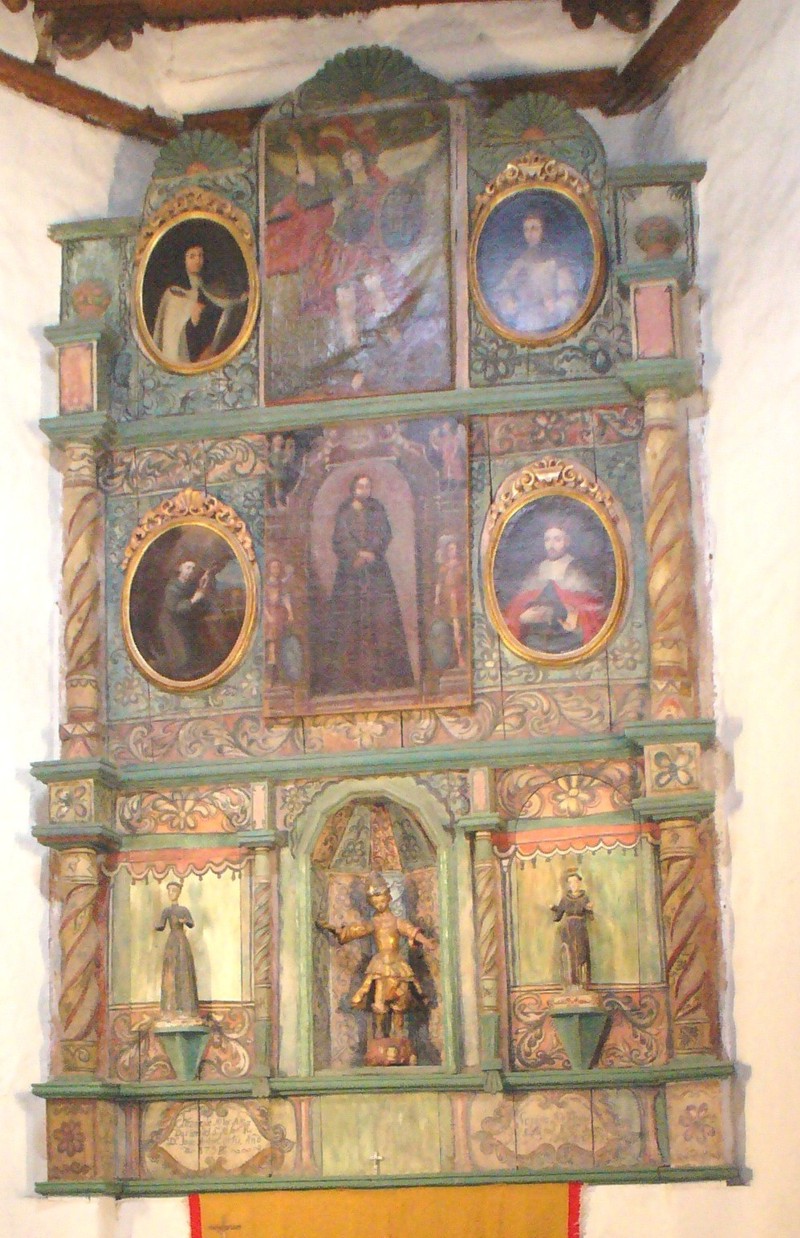Our Trip to New Mexico
Pictures by Arthur
Commentary by Alanna
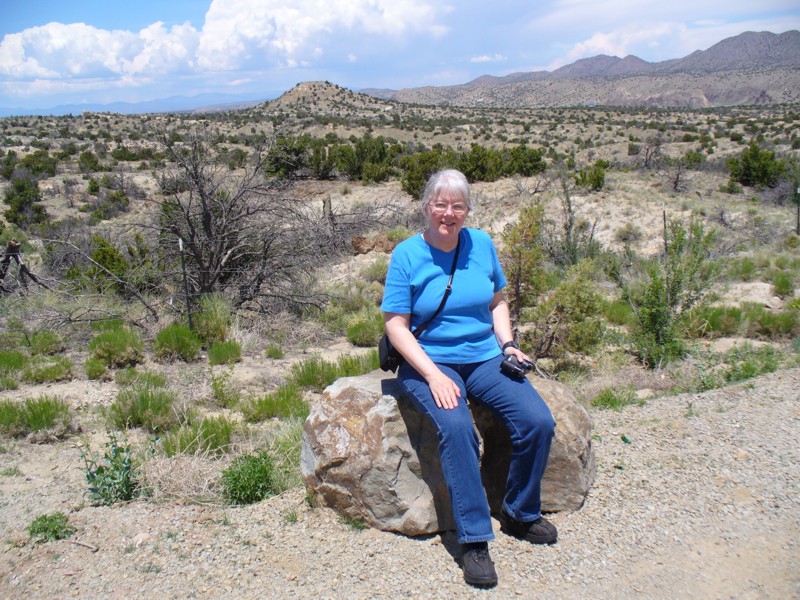
Above is a picture we took of the countryside between Albuquerque to
Santa Fe. We drove on the side roads rather than the Interstate because
they are less hectic, less populated and less commercial. We stopped to
take this picture because of the butte in the background (and the miles
and miles of 'miles and miles').
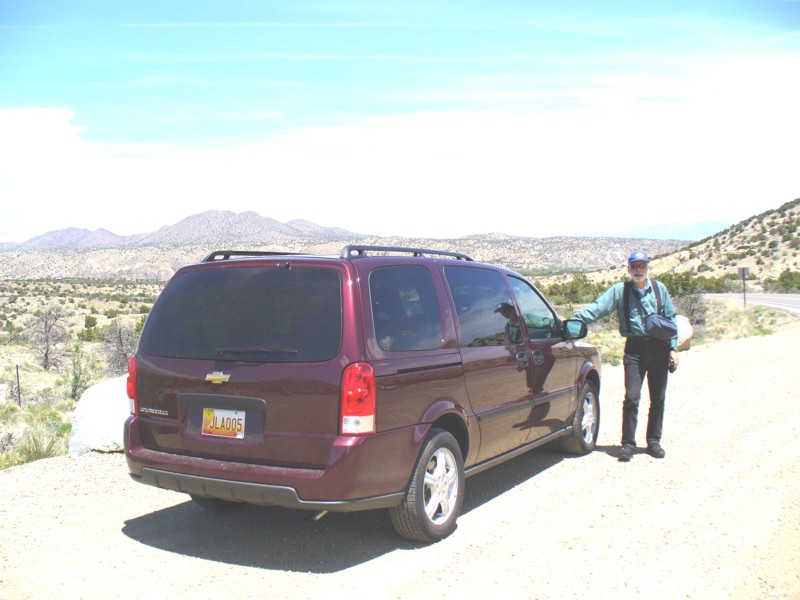
At the same spot we took a picture of the vehicle we rented. We had
booked a medium size (which they didn't have when we arrived in
Albuquerque) so they upgraded us to this van -- WITH air-conditioning.
The temperature was 85!
The New Mexico licence plates have yellow and orange hot-air balloons
pictured on them -- one of the fun activities to do (we didn't).
New Mexico is a bilingual state -- Spanish and English. We heard more
Spanish than English.
Note the requisite 'el touristo' in this picture.
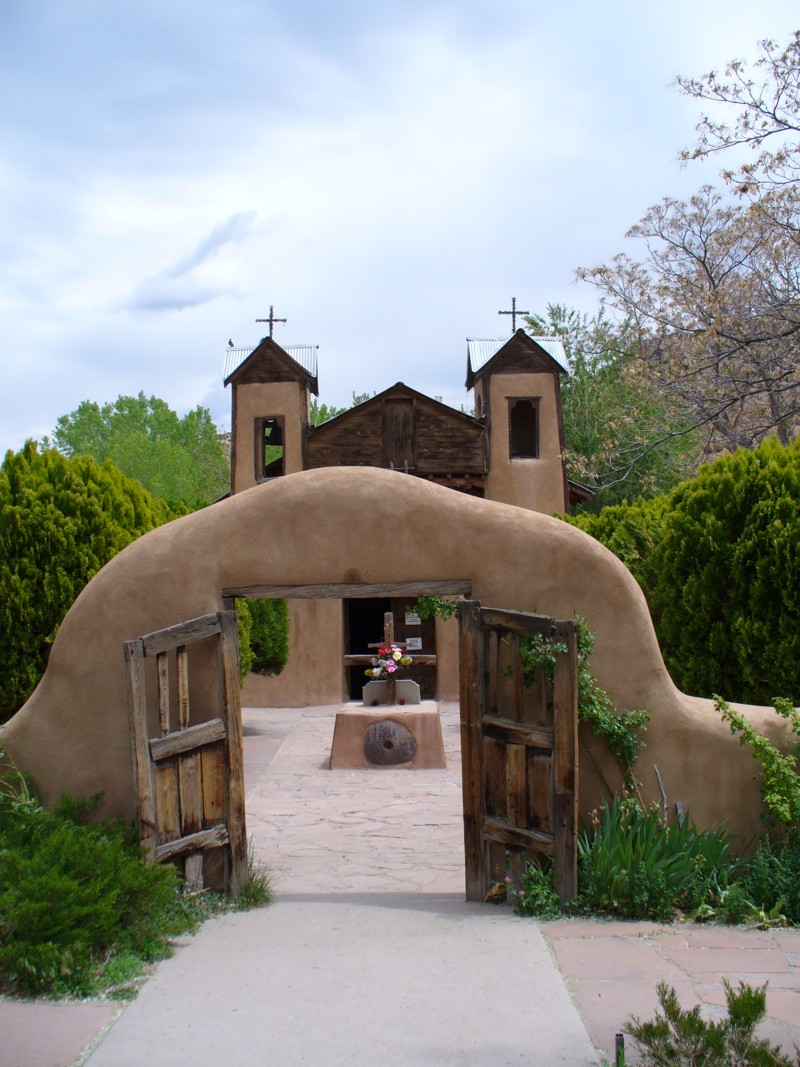
This little adobe church is called 'Santuario de Chimayo'
(just south of Santa Fe). It's known as the Lourdes of the Southwest.
People make pilgrimages here for healing (leaving their crutches
behind). The interior of the church has some amazing folk art done by
the people in the 1800's.
Instead of healing waters as at Lourdes, there is 'healing dirt'.
People are invited to take home some of the red earth found in one of
the side chapels.
Just behind the church is a mountain sacred to the First Nations people
of the area, both Mexicans and First Nations people (who are also
predominantly Roman Catholic).
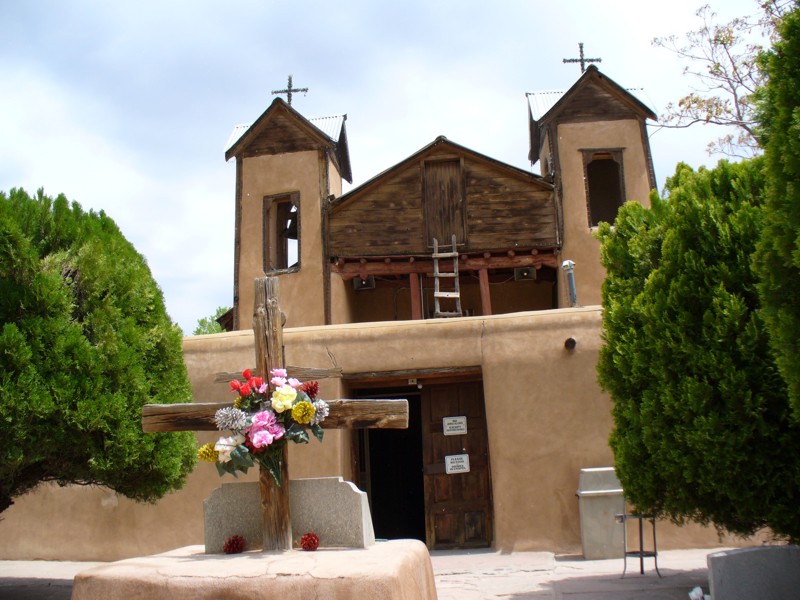
Above is the same church but taken from inside the courtyard.
We weren't allowed to take pictures inside the church itself.
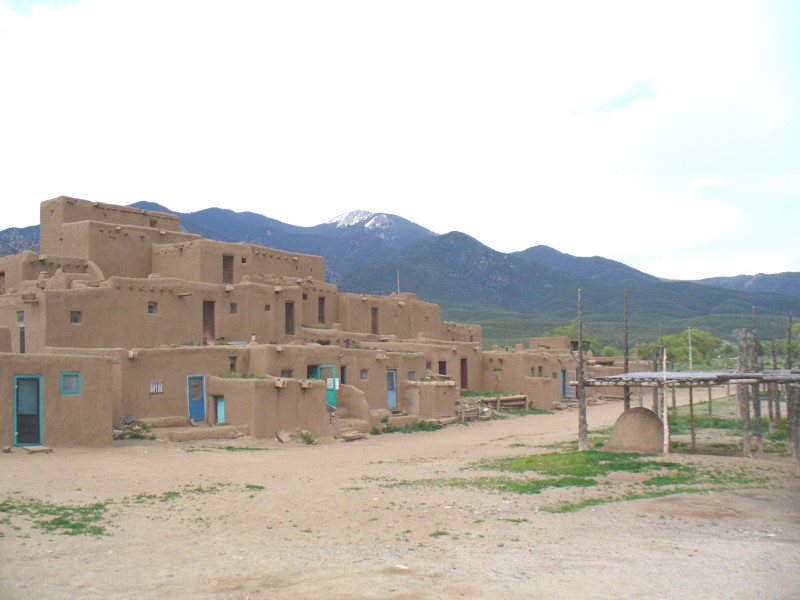
Above is Taos Pueblo, a pueblo just outside the city limits
of Taos. This pueblo is inhabited and is open to tourists only from
10:00 a.m to 5:00 p.m. About 150 people live in the town full-time
although this tribe has 2,000 members. Each family of the tribe has a
home here but most choose to live part-time in the pueblo and part-time
in a 21st century house in Taos.
Although the Pueblo people here attempt to maintain the authenticity of
their town (they do not allow electricity or running water), the adobe
with blue doors is the traditional way the Mexican adobes were built.
The Taos Pueblo is also different from other pueblos in that the
entrances are on the sides of the buildings rather than at the top.
On the lower right of the picture is a traditional beehive oven -- a
horno oven. Unfortunately, by the time we arrived at the Pueblo the
bread was sold out. Dang!
The framework you see surrounding the oven is drying racks. The people
dry their food in the open air in order to preserve it.
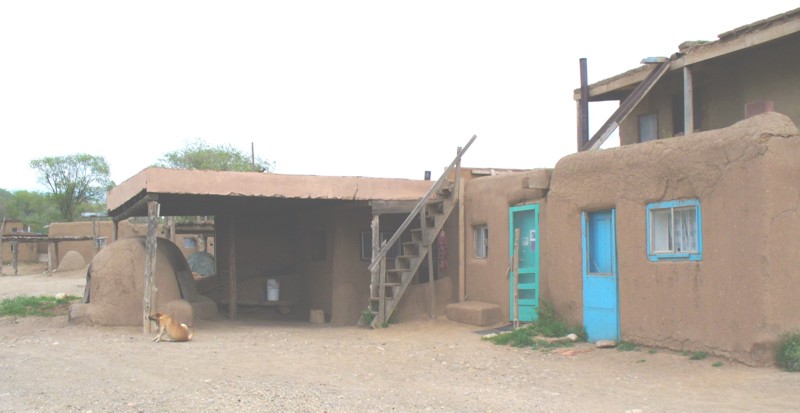
This is a different section of the town on the other side of the stream
which bisects the town and is the water supply for the people in the
town. Another horno (and also one in the background).
The Taos First Nations people fought the Spanish and were the most
independent of the Pueblo peoples.
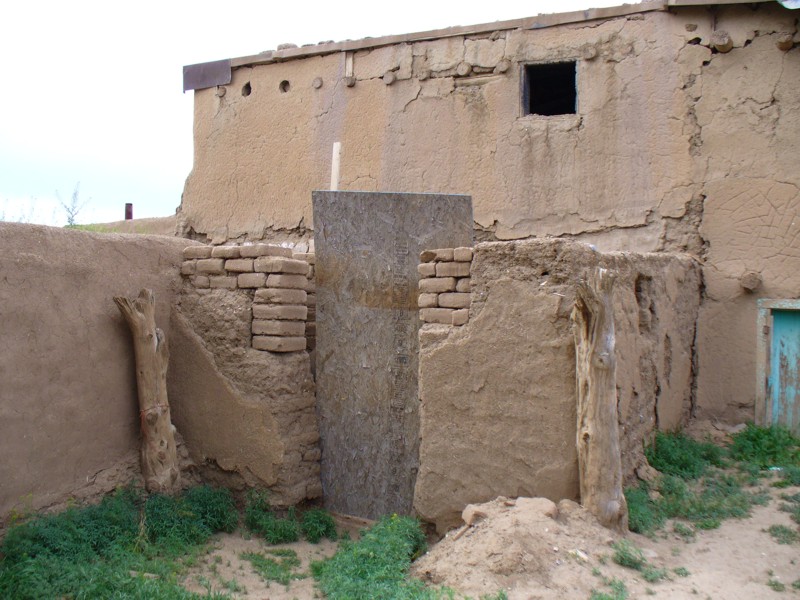
Each family is required to keep their abobe in good
condition. The mud on the exterior of the adobe needs to be replaced
minimum every three years (if not before). Art took this picture of one
building which required extensive work -- he wanted to show how the
buildings are constructed of mud (mixed with straw) bricks and then
faced with more mud (mixed with straw).
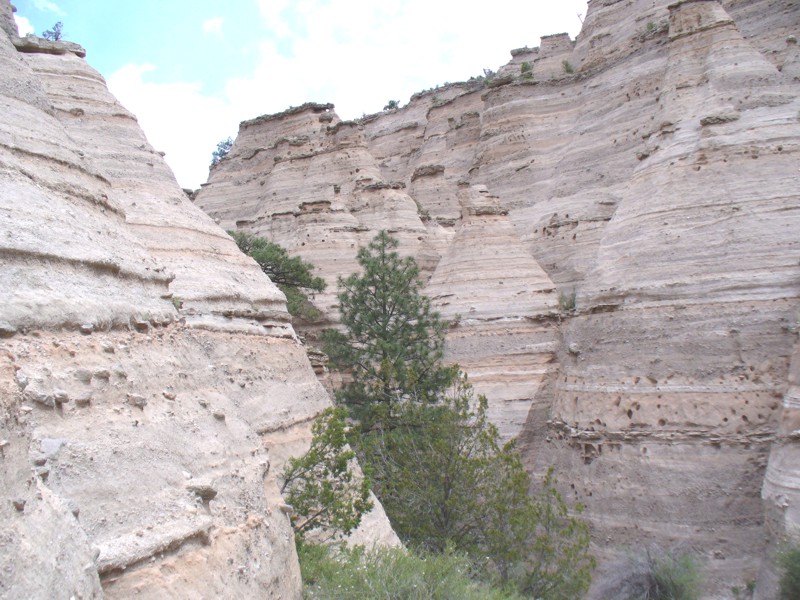
Above is a picture of part of Kasha-Katuwe Tent Rocks National
Monument, southwest of Santa Fe. 'Kasha-Katuwe' means 'white cliffs'
(who would have guessed?) in the traditional language of Keresan
language of the Conchiti Pueblo which is nearby. These cone-shaped
constructions are the products of volcanic eruptions that occurred 6 to
7 million years ago -- the Jemez Volcano erupted twice ejecting enough
material to cover a 400-square-mile radius with pumice and ash over
1,000 feet thick. Each eruption was 600 times more powerful than the
1980 eruption of Mount St. Helens.
Over time, wind and water cut into these deposits creating canyons and
arroyos and scooping holes in the rock. Boulder caps are perched on
many of the tapering hoodoos and protect the softer pumice below.
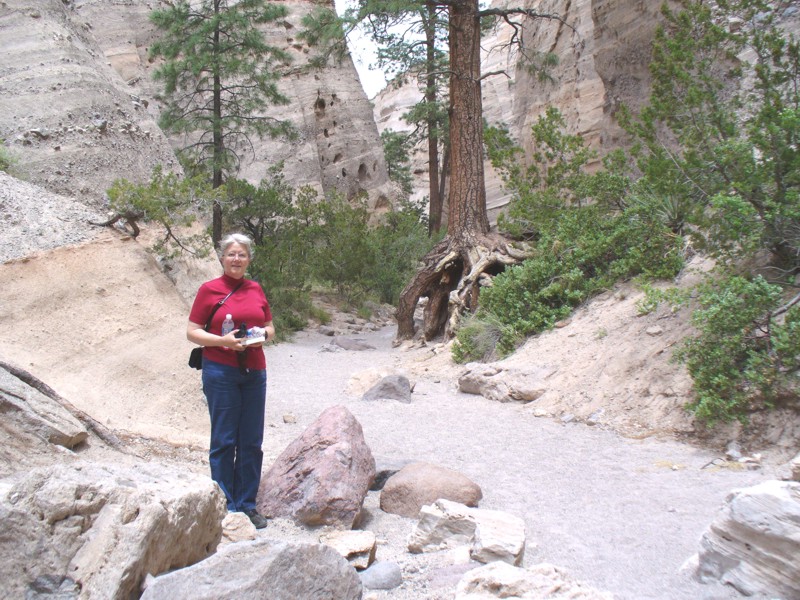
There is quite an interesting hike (about 3 miles) through the hoodoos
via arroyos (dry gullies formed from streams during the rainy season).
We never made it to the top of the hike because Alanna found the
footing a little too treacherous (and a little too high -- yuck!). The
tree in the background above has had the soil washed away and is
clinging tenaciously to the surrounding rocks. See below for a picture
of some exotic wildlife lounging against these same roots.
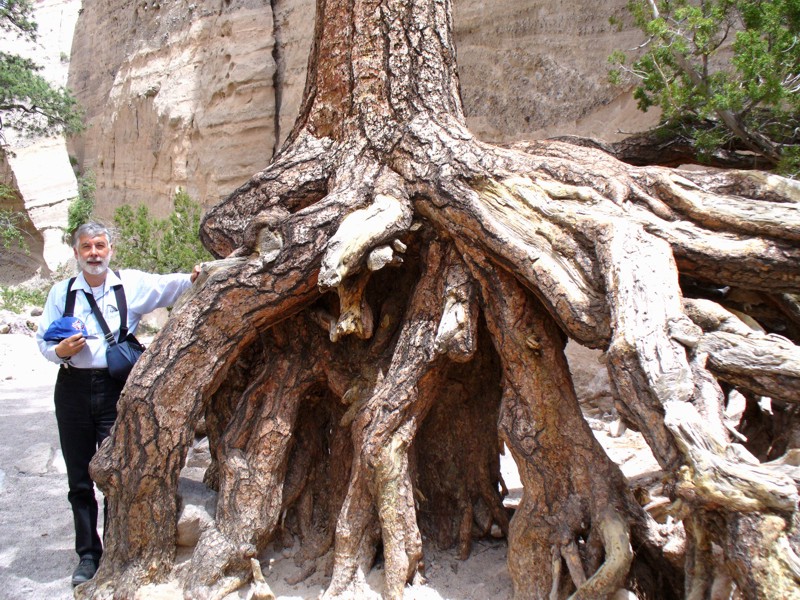
The Blue Jays are everywhere!
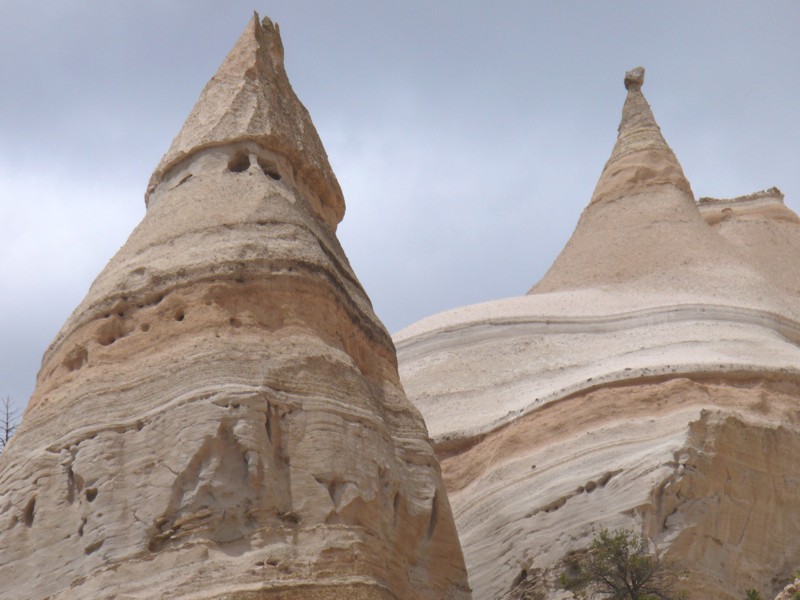
When Art saw the above hoodoo, he immediately asked, "What
does this remind you of?
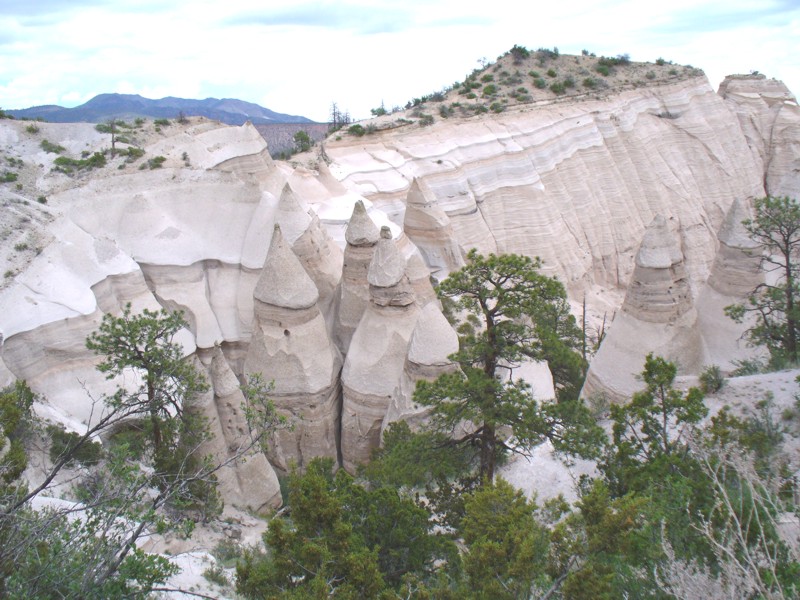
The above picture is a collection of the same hoodoos but
seen from above. At this point we were approaching the area where we
turned back and started the hike down.
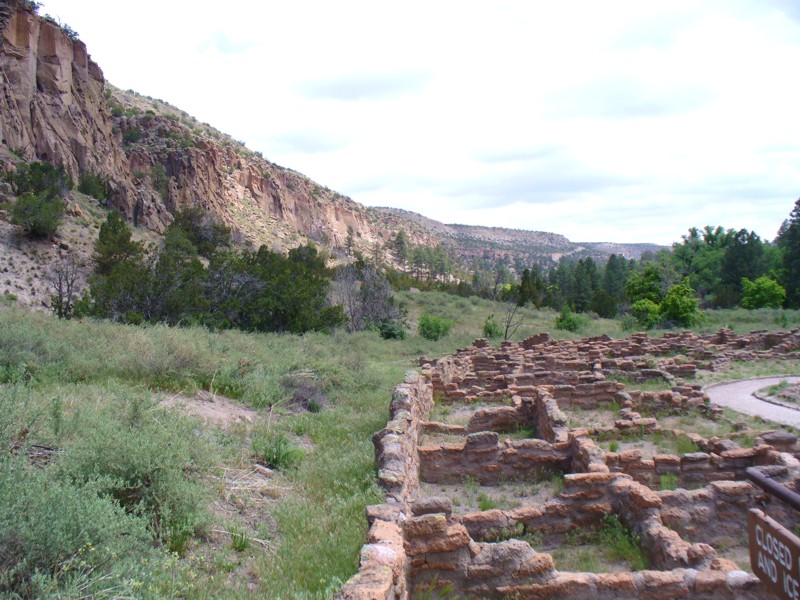
We visited Bandelier National Monument in Frijoles Canyon,
west of Santa Fe (and almost next door to Los Alamos). It's quite a
descent to the canyon floor where the ancestral Pueblo people lived
more than 10,000 years ago. You can see the rim of the Pajarito Plateau
that was formed by the same eruptions of the Jemez Volcano that formed
the Kasha-Katuwe hoodoos.
Above are the foundations of the Tyuonyi Pueblo which was one to two
stories high, contained about 400 rooms and housed approximately 100
people. It was built approximately 600 years ago.
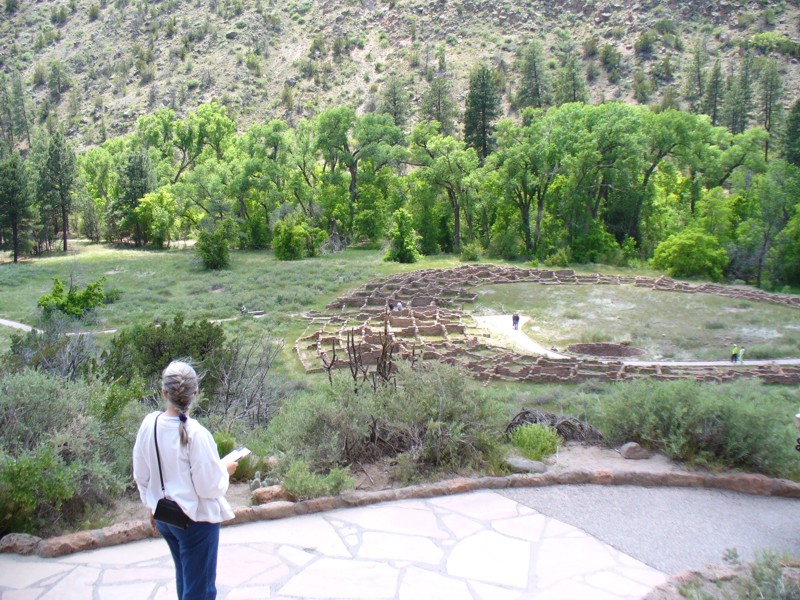
Alanna is looking down at the same Pueblo ruins and the
central plaza area.
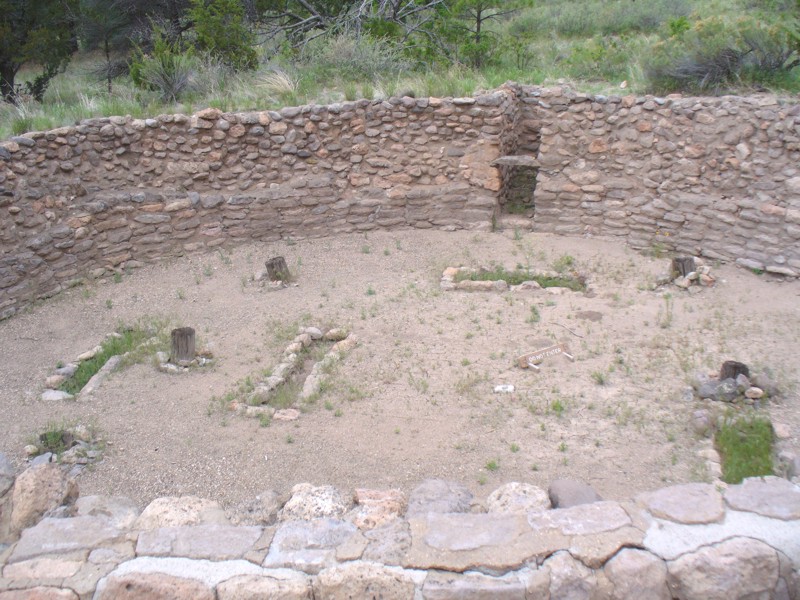
Above is a picture looking down into a kiva, an underground
ceremonial centre for the Tyuonyi Pueblo. The kiva is the centre of the
community, not only for religious activities but also for education and
decision-making. The kiva was covered by wood and earth and entered
through a opening in the roof.
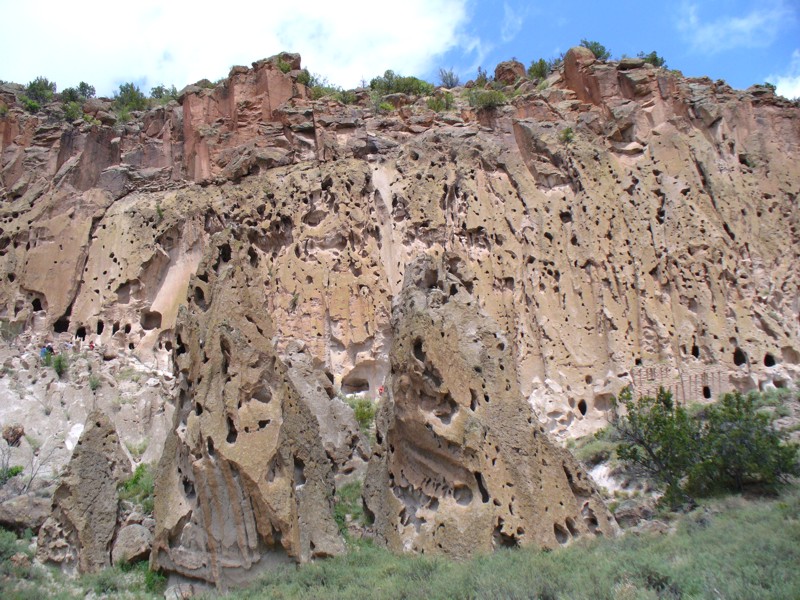
The Pueblo peoples built not only the Tyuonyi Pueblo but also
lived in cliff dwellings, which started as holes carved by erosion into
the soft pumice canyon walls and were then enlarged by the people. If
you look
closely at the centre of the above picture you can see a small reddish
dot -- this is a person. If you look over to the left, you can see a
small bluish dot -- this is another person. We are on the floor of the
canyon looking up at the walkways in front of the cliff dwellings.
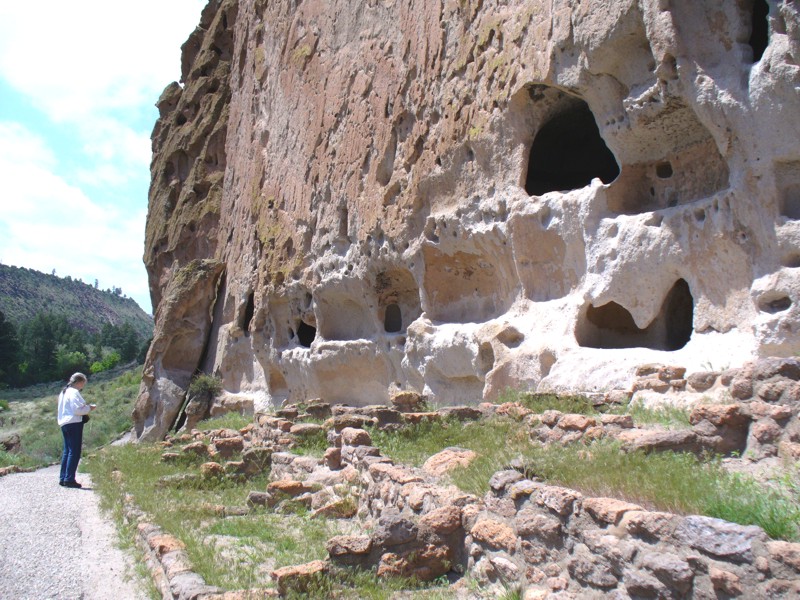
Alanna is looking at some of the caves carved into the pumice
and the ruins of foundations that were built in front of these cave
dwellings. These dwellings are all built on the south facing walls of
the canyon.
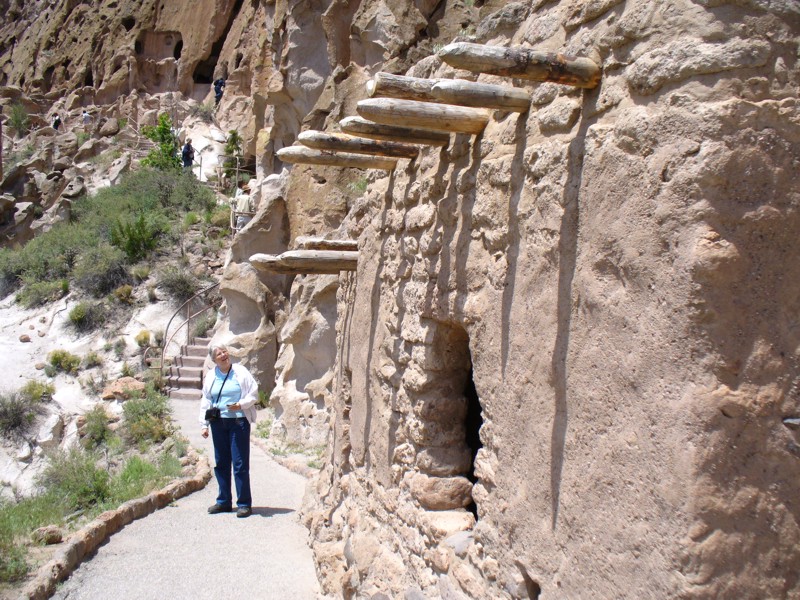
This is a reconstructed dwelling built against the side of
the cliff.
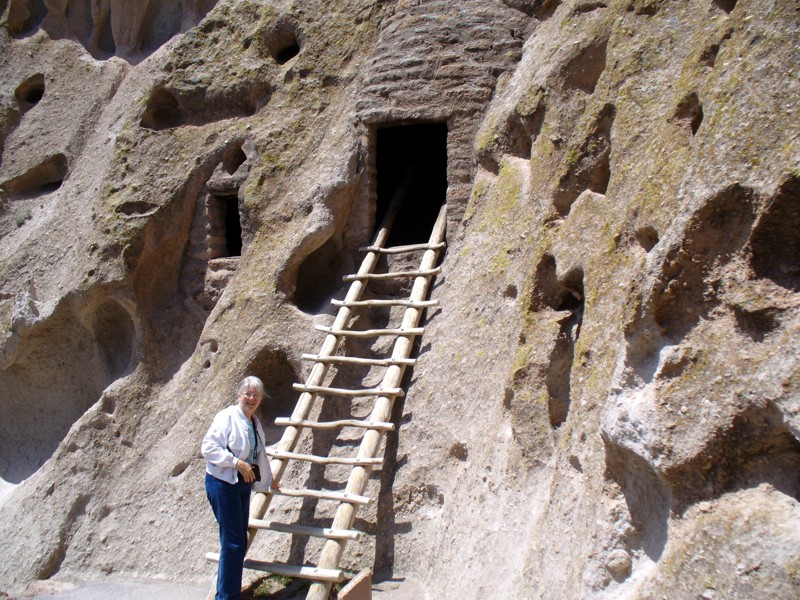
Alanna is about to enter a cave dwelling (going up ladders is
not her favourite activity).
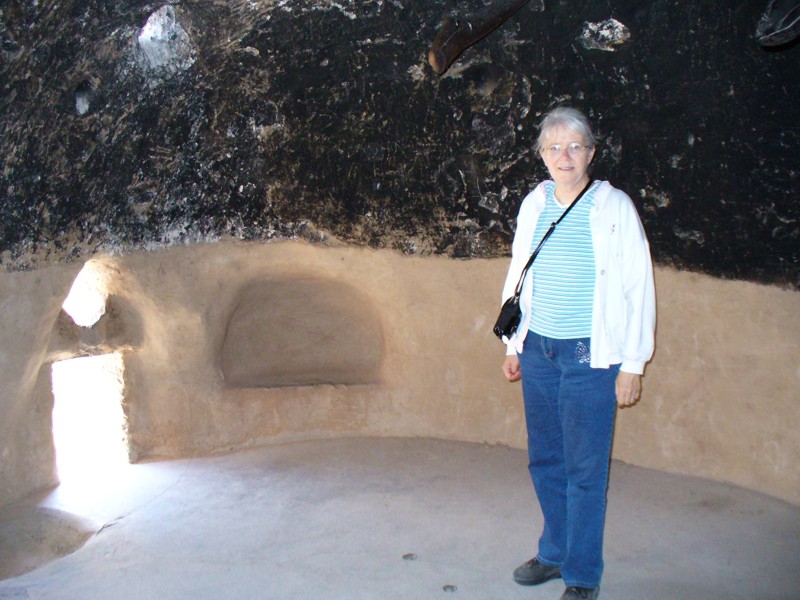
Inside a cave kiva. The lower walls of cave dwellings were
usually plastered and painted and the ceilings blackened with soot.
This cave kiva is actually quite a large room in comparison to the
rooms of the cave dwellings. A person Alanna's height would have to be
bent over the whole time she were in a cave dwelling and only two
people could fit inside the room.
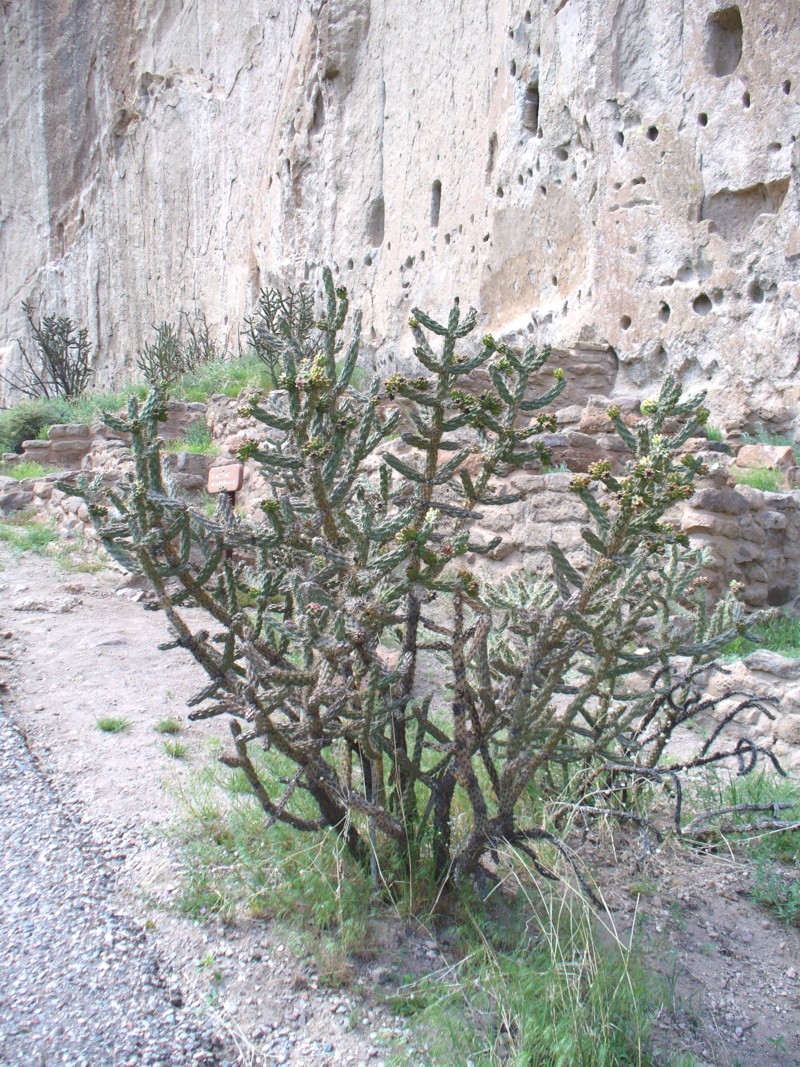
These are amazing cactus plants called cholla (pronounced
'choya'). Unlike other cactus plants, a cholla has a very woody centre
core. When the plant dies, the wood is quite interesting to see because
of intricate lacework of holes.
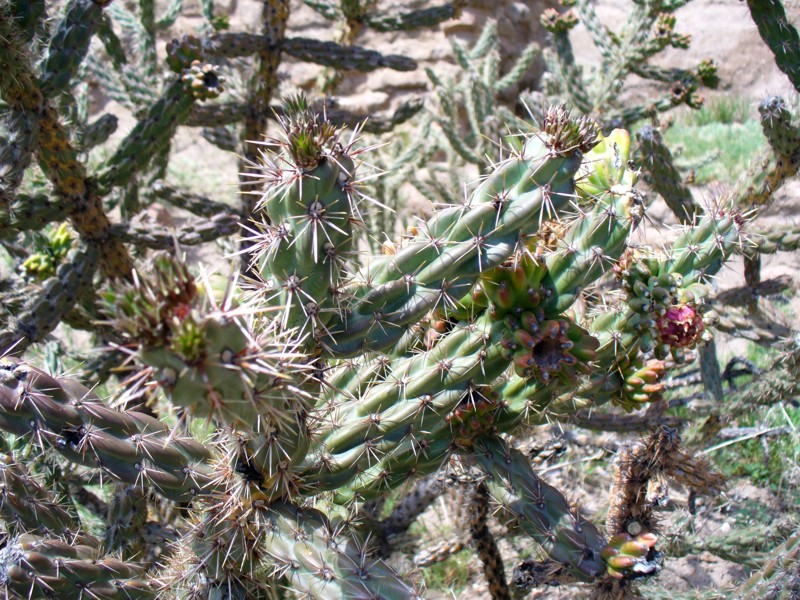
This is a close-up of the cholla showing a flower about ready
to open.
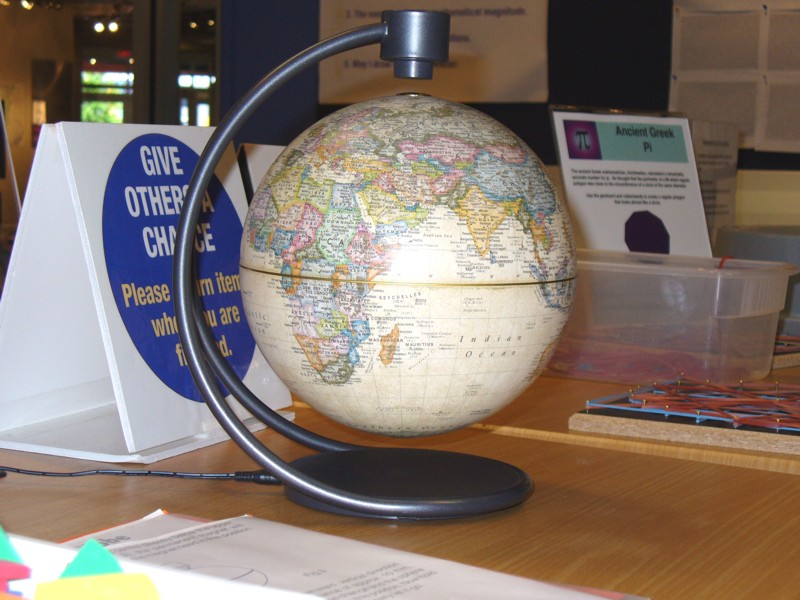
We went into Los Alamos and visited the Bradbury Science
Museum (not named after Ray Bradbury the science fiction author but
rather after the second director of Los Alamos National
Laboratory (Robert Oppenheimer was the first director). This LANL
covers an extensive area of several square
kilometers -- we were driving around it as we drove up to Bandelier
National Monument.
Art captured the above picture at the Science Museum after he
successfully placed the globe within the
magnetic field generated by the apparatusat at
the precise point where the globe will remain suspended in mid-air --
it was a
struggle, but not impossible because a computer adjusts the magnetic
field to keep the globe at that point!
At the Museum we learned about the Manhattan project, located at Los
Alamos, that developed the bombs dropped on Hiroshima and Nagasaki.
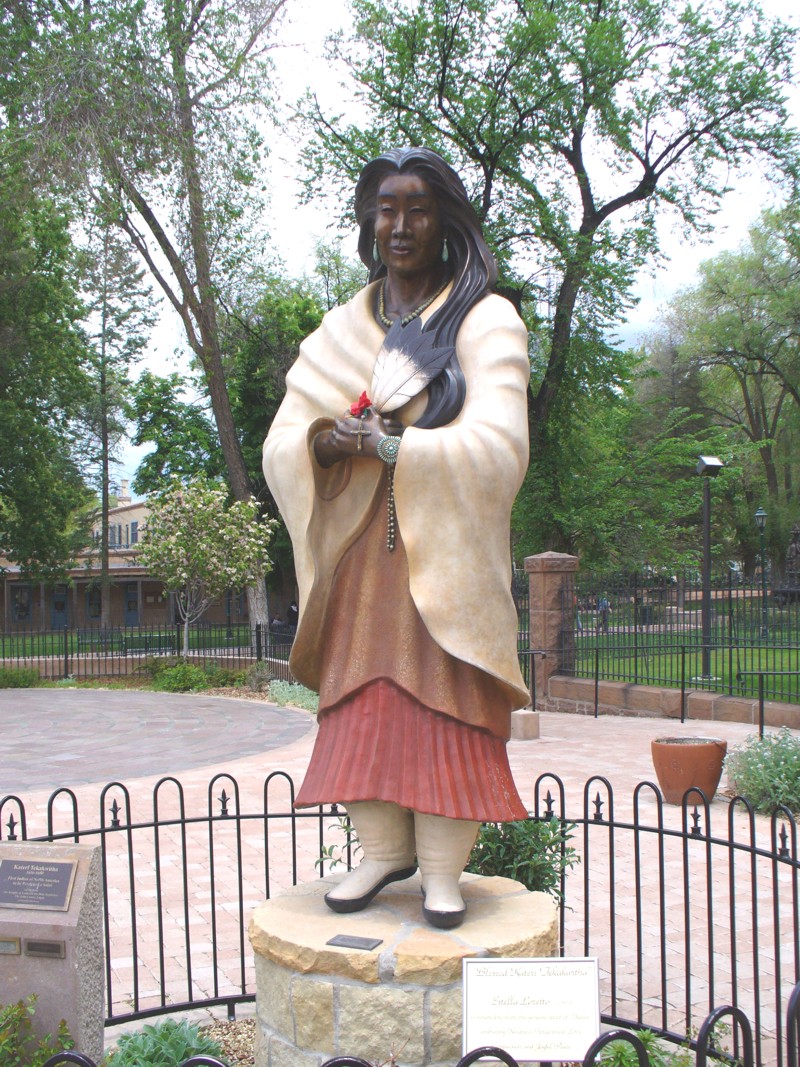
This is a statue of Blessed Kateri Tekakwitha, a Mohawk
Indian woman (upper New York state) who is considered a saint by many
people in the Roman Catholic church. It was odd to see a statue of
Mohawk native woman in the American southwest but she is a hero to the
First Nations people.
This statue is in front of St. Francis Cathedral in Santa Fe.
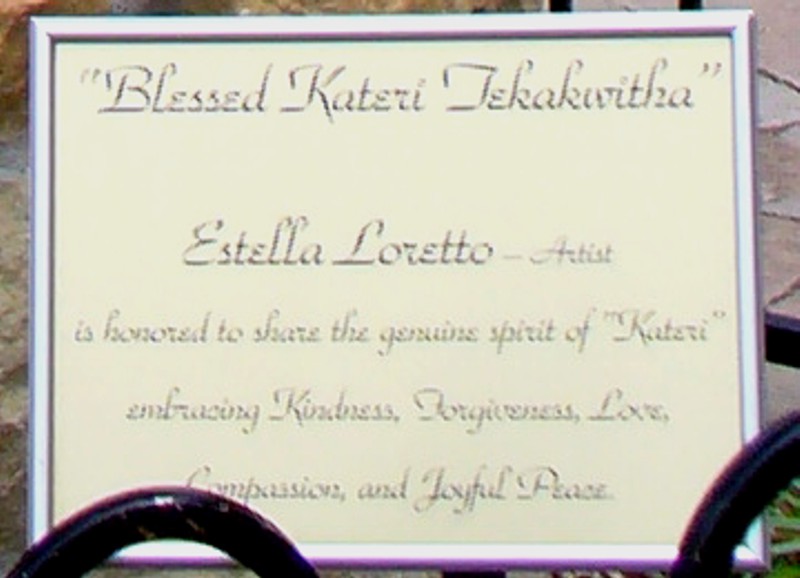
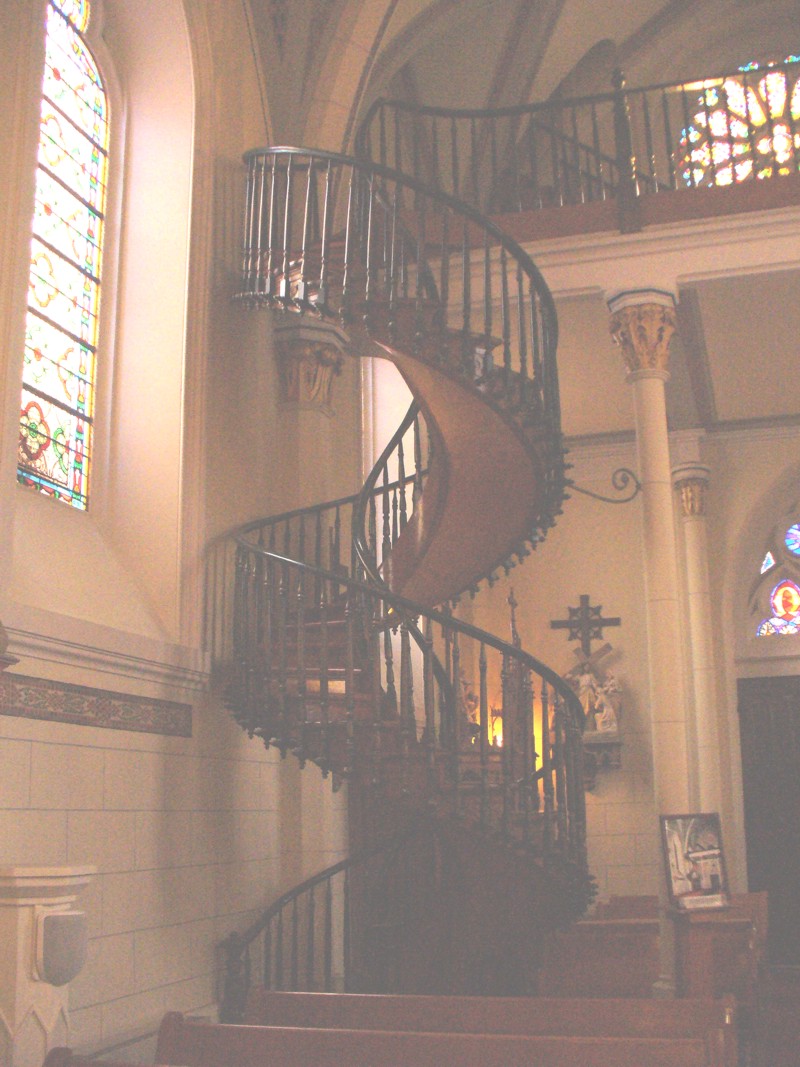
This 'miraculous' staircase is inside the former Loretto Chapel, a
small church in Santa
Fe, a few blocks from the Cathedral. There was not enough room for a
conventional stairway from the chapel floor to the choir loft. The
story is that the Sisters of Loretto prayed for a solution. A carpenter
(who, so the story goes, the nuns believed to be St. Joseph) appeared
and constructed from
wood the 23-foot-high spiral staircase, using a square, a saw and a tub
of water to season the wood. He used only wooden pegs to secure the
staircase which makes two complete turns and has 33 steps. The
carpenter then disappeared as mysteriously as he came. The railings
were added at a much later date.
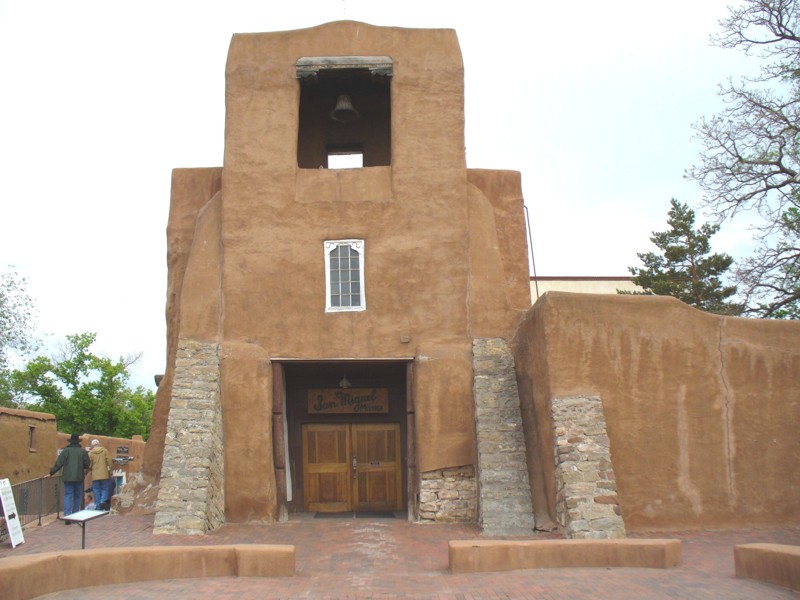
This is the exterior of the Church of San Miguel in Santa Fe,
a few blocks from the Cathedral. The Franciscans built the church in
the 1600s as a house of worship for the Tlaxcalan Indians whom the
Spanish had brought with them from Mexico. They advertise it as the
oldest church in the United States (however, another book says a church
at the Acoma Pueblo deserves that honour).
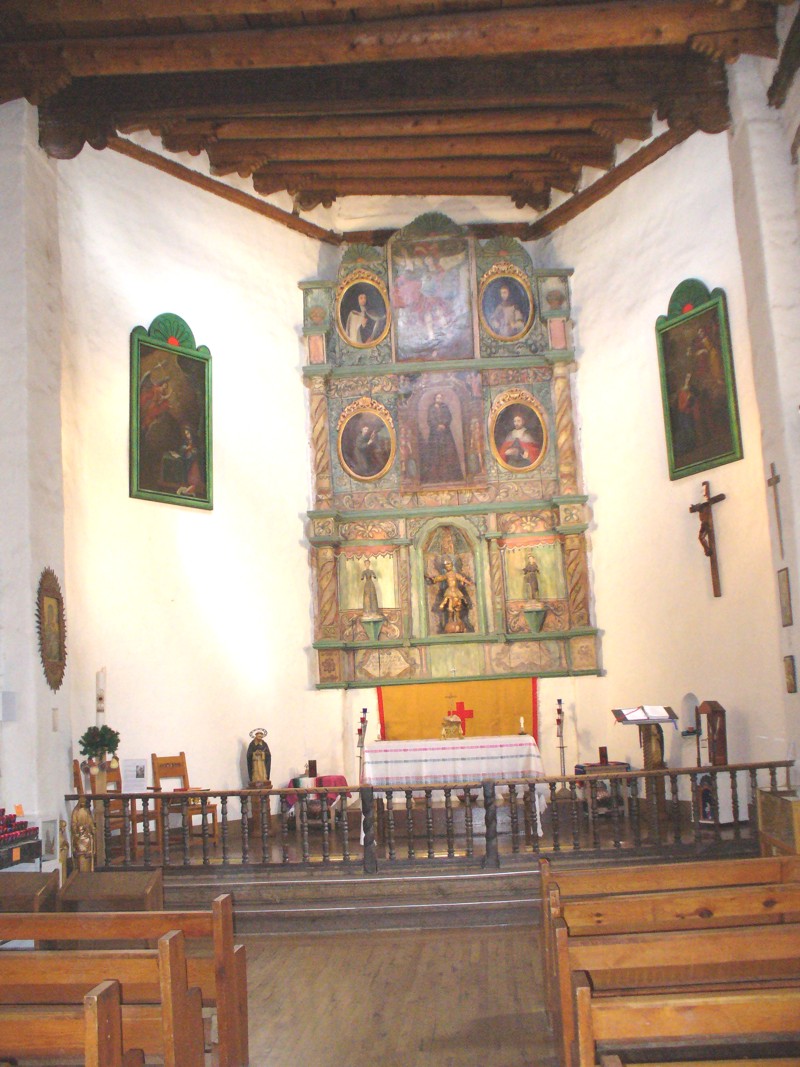
Inside the Church of San Miguel, there is a painted wooden
altarpiece that the Spanish call a 'reredos'. It was constructed in
1798 and is the oldest wooden reredos in New Mexico. The little statues
at the bottom of the altarpiece are reminiscent of the folk art in the
Santuario de Chimayo.
The top painting is St. Michael flanked by St. Theresa of Avila on the
left and St. Gertrude on the right. In the centre is a painting of
Christ the Nazarene with St. Francis of Assis on the left and St. Louis
on the right.
The statue in the centre niche is a gilded, carved, wooden statue of
St. Michael the Archangel celebrating his victory over Satan. It dates
from at least 1709 when it was brought from Mexico.
